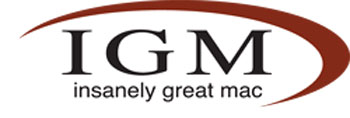PowerPC: IBM Throws Down the Gauntlet
February 15th 2003
Wider use of PowerPC is the key reason behind IBM's decision to make the chip available to a wider range of licensees.
Included in Big Blue's plans is building a version of the PowerPC that will become its mainstay network processor, according to a report in eWeek.
"Our goal with the PowerPC has been to continue to innovate ... but also provide a wider range of applications and support for our customers," said Lisa Su, director of PowerPC and Emerging Products for IBM Microelectronics in the article. "Our customers say that they like the PowerPC, but they'd like to be able to use it more."
The PowerPC is currently restricted to a select few licensees, of which Apple is one. The right to use the 'PowerPC' logo is restricted to certified users. Other licensees include ST Microelectronics (formerly SGS-Thomson). However, IBM can determine how the PowerPC is utilized; for example, as in data storage only, as opposed to general purpose. Firms may also be permitted to license the PowerPC core.
Under IBM's new licensing policy, licensees, such as Synopsis, will gain access to PowerPC's core and, in turn, Synopsis will grant licensees of its DesignWare Library "access to models to help them design the synthesized core", according to the story.
Another firm, Cadence Design Systems, will use PowerPC for its design services. Designs based on PowerPC can then be made by both IBM and third-party manufacturers, which the article says will simplify chip design processes. IBM expects manufacture to commence in the second half of 2003.
Over the next 12-18 months, IBM is planning to speed up 'convergence' of its PowerPC derivatives, such as the Power4/4+ and 440GX. Convergence will mean that a standard PowerPC chip has a variety of capabilities, including the ability to be a network processor, as well as a game box chip (e.g., Nintendo). The creation of a general purpose PowerPC chip means that PowerPCs will not need to be created specifically for particular applications.
Analysis: IBM's move has some broad ramifications for Apple: first, convergence should make PowerPC more popular, due to its wider application; second, third-party hardware developers can now make their own modifications to the design; third, Power4 (and, presumably, PowerPC 970), will be able to perform a variety of tasks as a general-purpose chip. Fourth, this is also likely to lead to greater economies of scale, giving Apple access to cheaper chips. Major savings when we're talking in terms of hundreds of thousands of orders.
And, rest assured, Intel and AMD will be watching how this pans out with more than early-morning interest.
